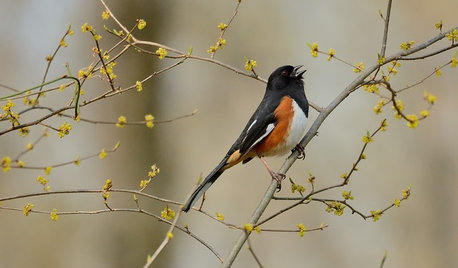Caffeine in soil
idaho_gardener
15 years ago
Related Stories

GARDENING GUIDESGreat Design Plant: Lindera Benzoin Offers 3-Season Interest
Support wildlife and enjoy the aromatic leaves of this U.S. native also known as spicebush, Benjamin bush and spicewood
Full Story
EDIBLE GARDENS12 Essential Herbs for Your Edible Garden
Make home cooking and drinks even better with herbs plucked from your own backyard or windowsill pot
Full Story
GARDENING GUIDESEssential Watering Tips for Your Edible Garden
To give your edible plants just what they need, check out these guidelines for how, when and how much to water
Full Story
PETSPet-Proofing Your Home: A Room-by-Room Guide
Not all pet dangers are obvious. Keep furry friends safe and sound by handling all of these potential hazards
Full Story
KITCHEN DESIGNWake Up Your Kitchen With Eye-Catching Color
Stencils, stripes and saturated hues can energize your kitchen without the effort of a full overhaul
Full Story






smokensqueal
bpgreen
Related Professionals
Ashburn Landscape Architects & Landscape Designers · East Chicago Landscape Contractors · Fair Lawn Landscape Contractors · Fort Atkinson Landscape Contractors · Glendale Heights Landscape Contractors · Mission Landscape Contractors · Norwalk Landscape Contractors · Stony Brook Landscape Contractors · Tigard Landscape Contractors · Vancouver Landscape Contractors · Oxon Hill Landscape Contractors · Boise Decks, Patios & Outdoor Enclosures · Del City Decks, Patios & Outdoor Enclosures · Statesville Decks, Patios & Outdoor Enclosures · West Bloomfield Township Decks, Patios & Outdoor EnclosuresKimmsr
idaho_gardenerOriginal Author
dchall_san_antonio
albert_135 39.17°N 119.76°W 4695ft.